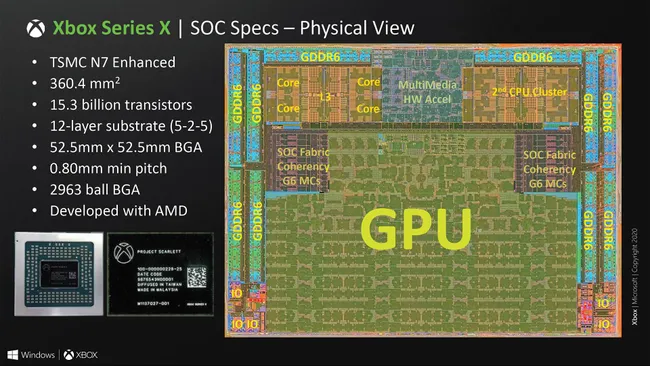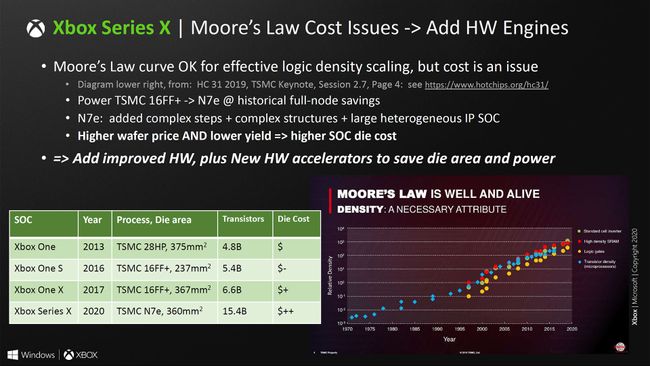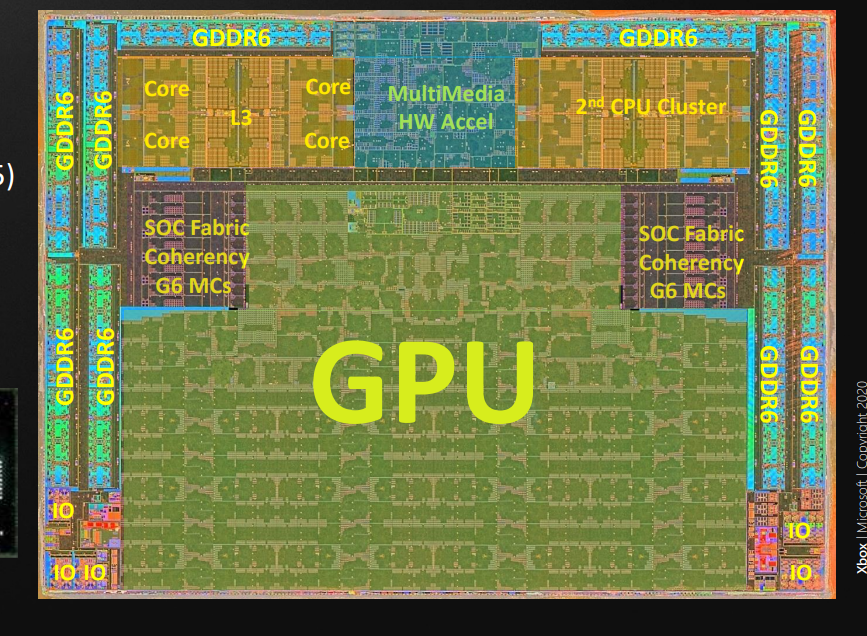-The GPU slides confirm it's using a Mesh Shading Geometry Engine. So yeah, it is of course still using a Geometry Engine, if that wasn't clear before. But It seems maybe the mesh shading functions have been integrated into it?
-VRS giving between 10% - 30% performance gains
-SFS has Tile Residency and Tile Request maps
-SFS can give up to 60% I/O and memory footprint savings
-GPU has custom RT and Ray-Triangle units. These appear to be custom hardware added to the GPU, outside of the CUs (I'm speculating).
-Shader can run in parallel for BVH traversals, material shading etc.
-ML Interface Acceleration (additional bits of hardware on the GPU from the sounds of it)
Overall not quite as detailed on some things as I'd like but it does give some new bits of info and a bit of clarification on other things.
Did anyone spot the "coherency" mention in the chip diagram? I thought that was a unique thing to PS5 but obviously not.
Where was that mentioned? I was skimming through these pretty quick so might've missed the mention.
Can you show us where you got this? Been ten minutes searching and it seems like you pulled numbers from nowhere and they all landed conveniently near each other.
In Road to PS5 Cerny said the Tempest Engine was about equivalent to a single CU core. PS5 TF is 10.275. 10.275 / 36 = 285 GFLOPs. So that's roughly what Tempest Engine is. They also said it can consume about 20 GB/s of memory bandwidth.
The Jaguar FLOPs I had to go to an older GAF thread to find, I'm taking that person's numbers at face value but they break down One X's CPU FLOPs to about 148 GFLOPs. However MS have already used "raw" numbers before kind of underplaying their GPU capabilities (e.g Series X "2x GPU of One X", doesn't account for architecture changes, which actually puts it much higher than "just" 2x One X's GPU). RDNA1 IPC over GCN was 50%, RDNA2 IPC over RDNA1 is roughly 25%.
Assuming Zen 2 gains over Jaguar architecture at least mirror RDNA1 over GCN, that puts Series X's audio solution at least around 222 GFLOPs - 225 GFLOPs. However I also remember MS saying they had "4x CPU performance" for Series X over One X and XBO. So at an extreme example that'd actually put Series X's audio solution at equivalent of 592 GFLOPs of One X's CPU cluster. That might be an extreme end though and I'm not nearly as such about that given figure vs. the 222 GFLOPs - 225 GFLOPs one.
So other way of seeing the audio solutions would be PS5 as 285 GFLOPs of RDNA2 equivalent and Series X as 222 GFLOPs (or 225 GFLOPs) equivalent of GCN. However it may be closer to 592 GFLOPs of GCN equivalent taking MS's statement of Series X CPU being "4x" that of One X's into account.






